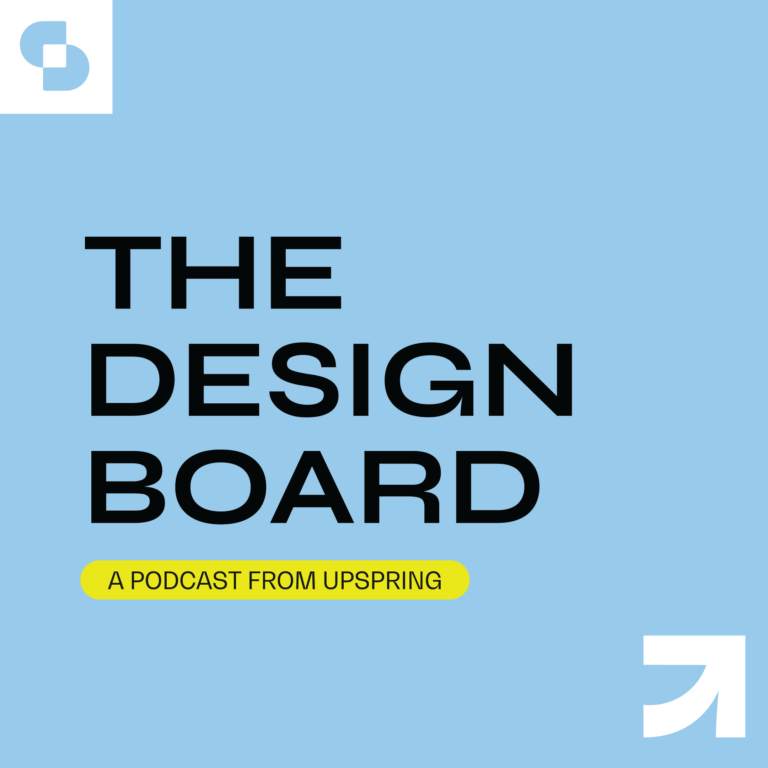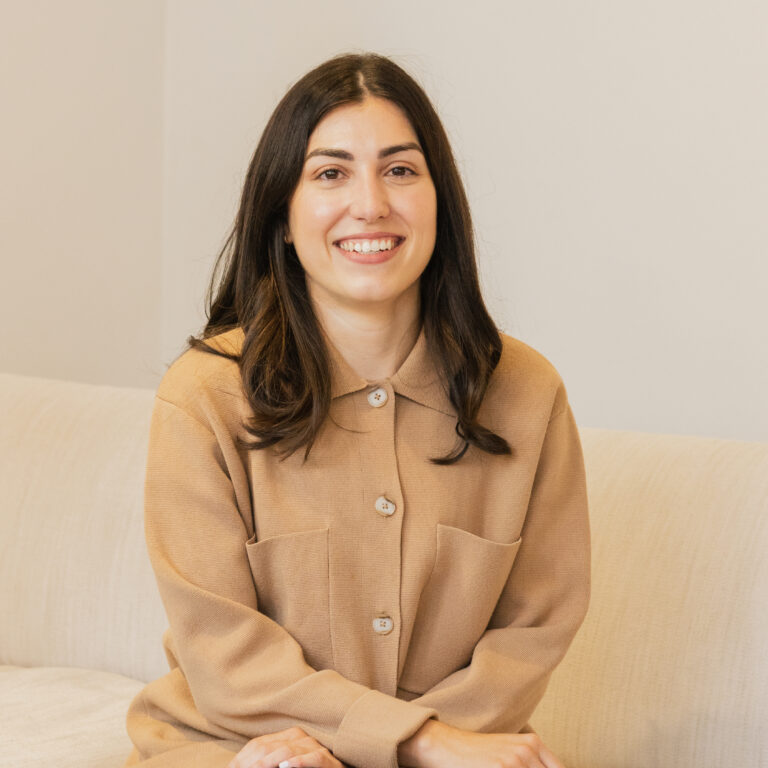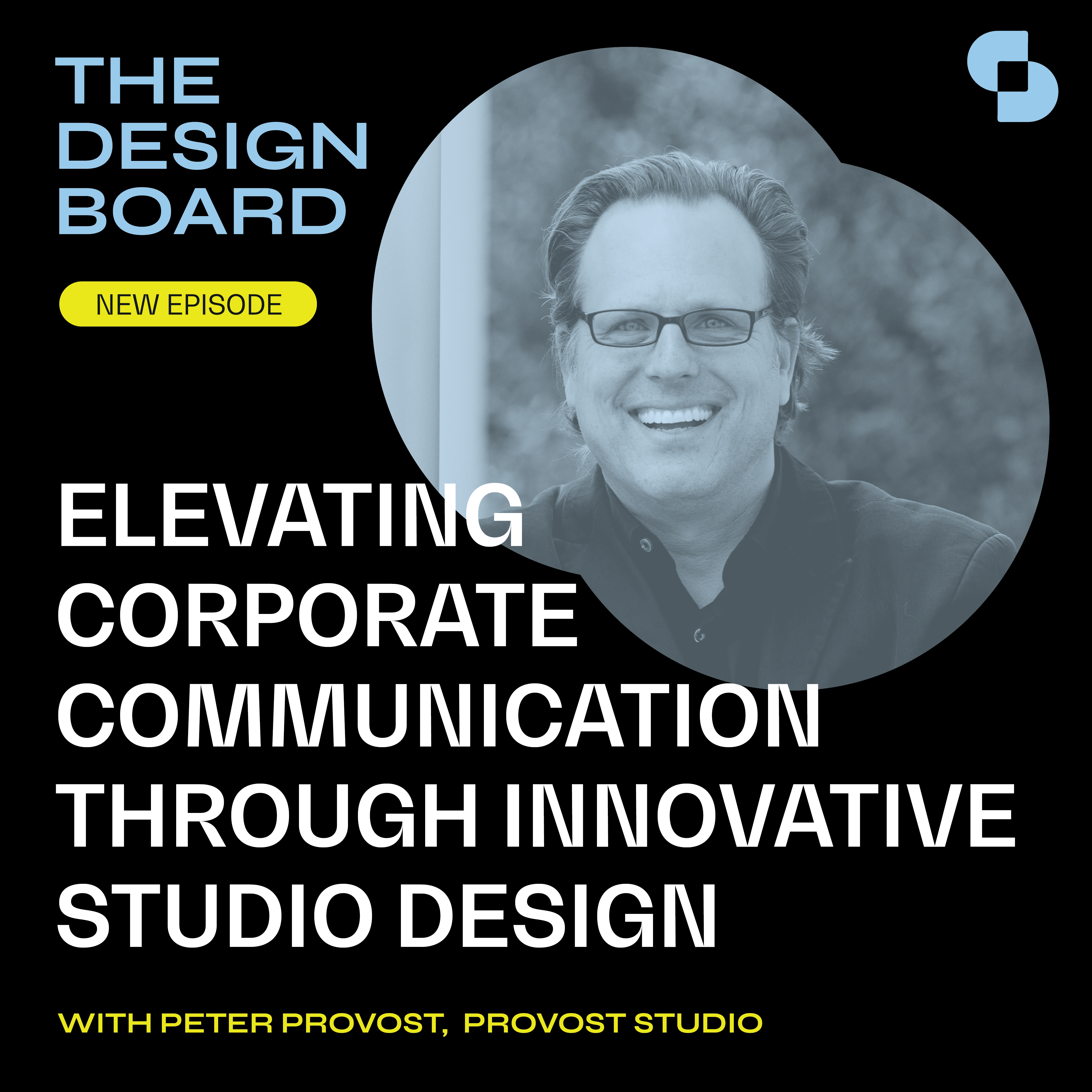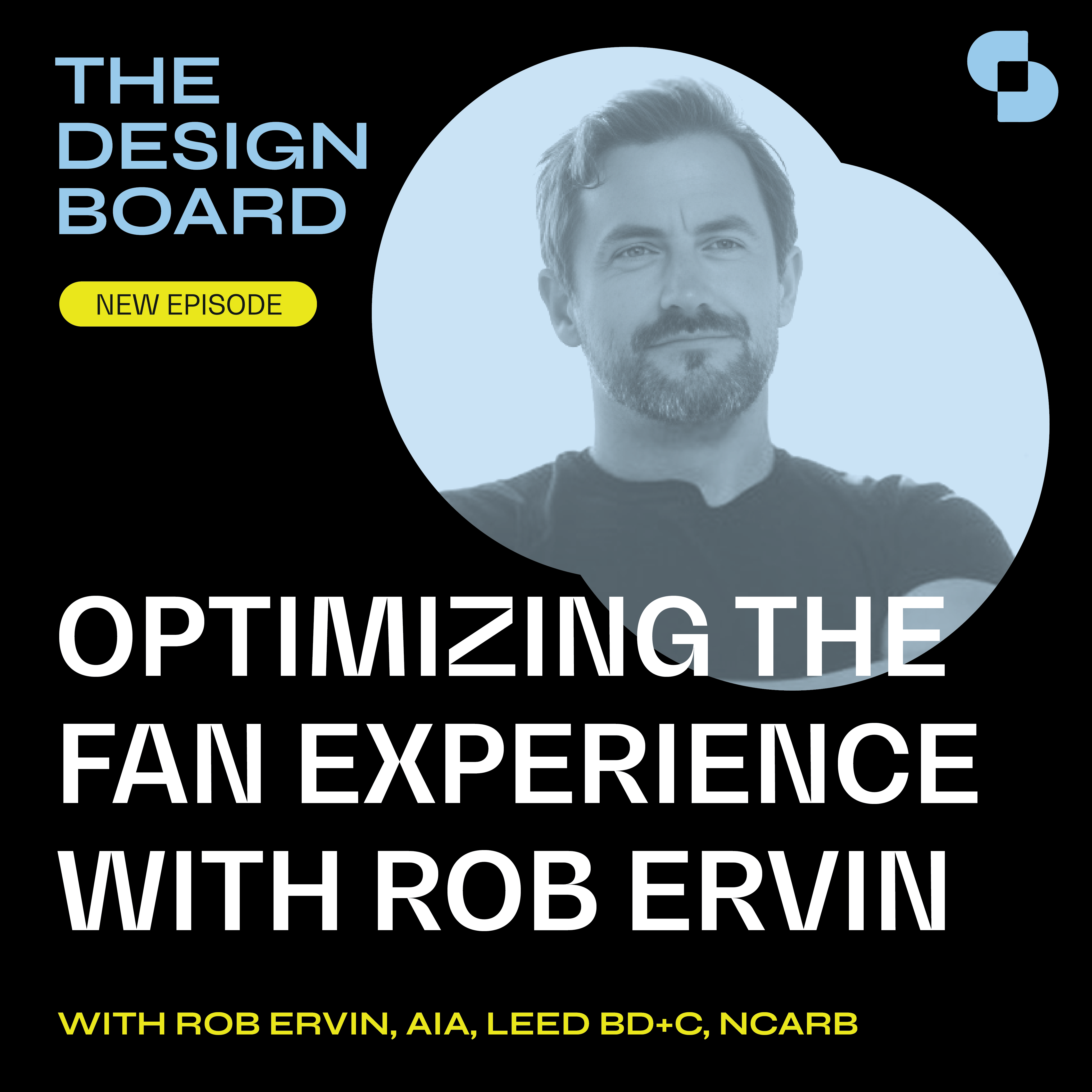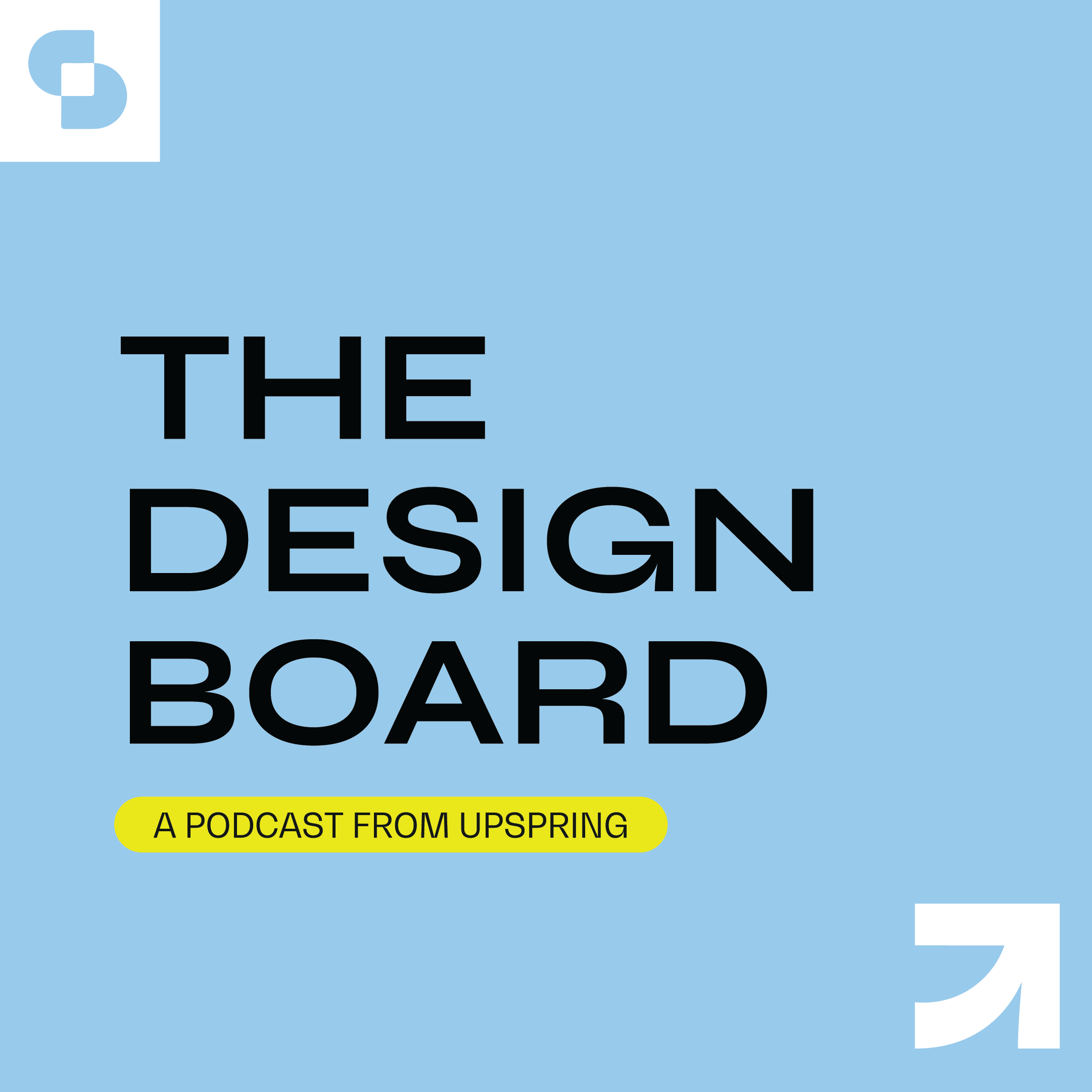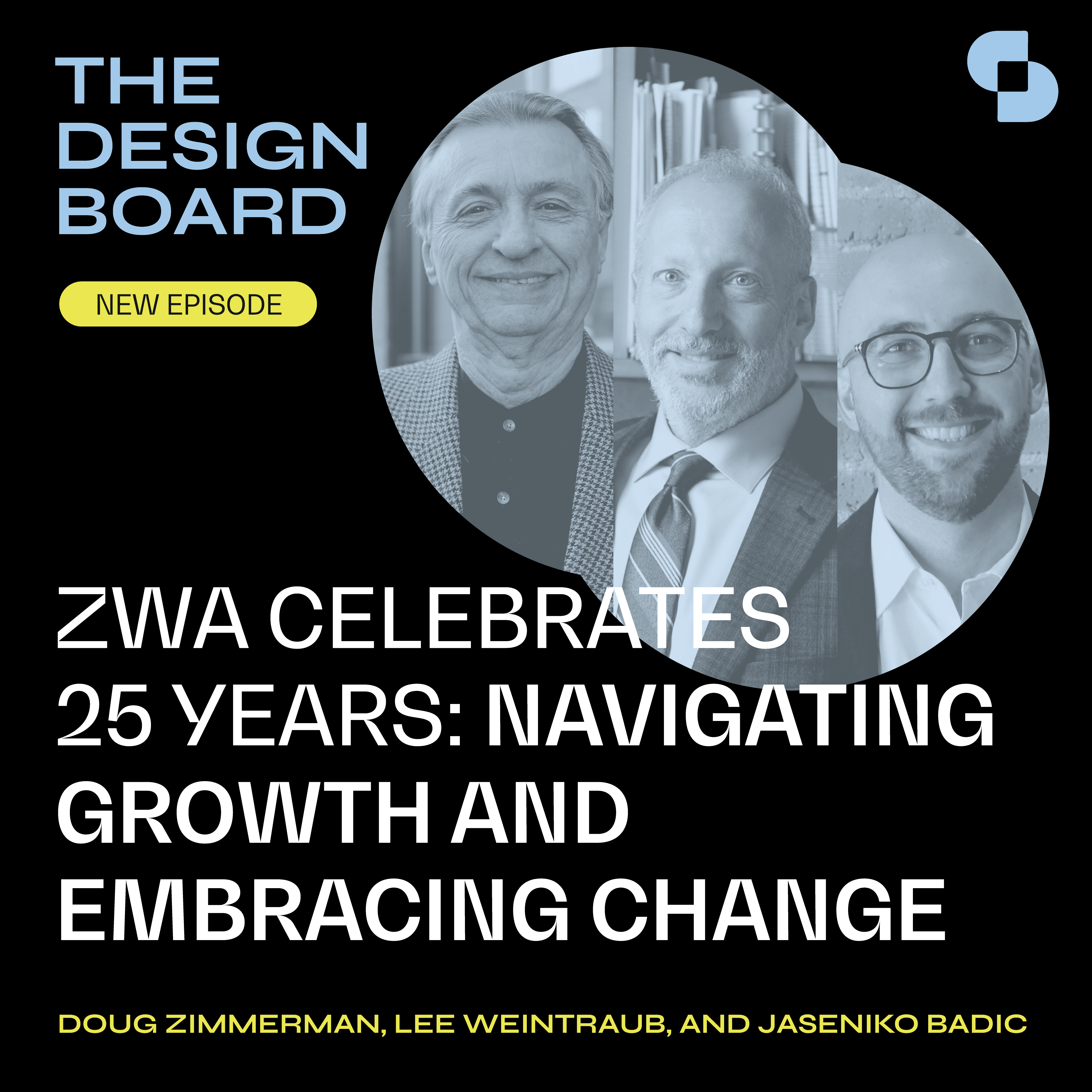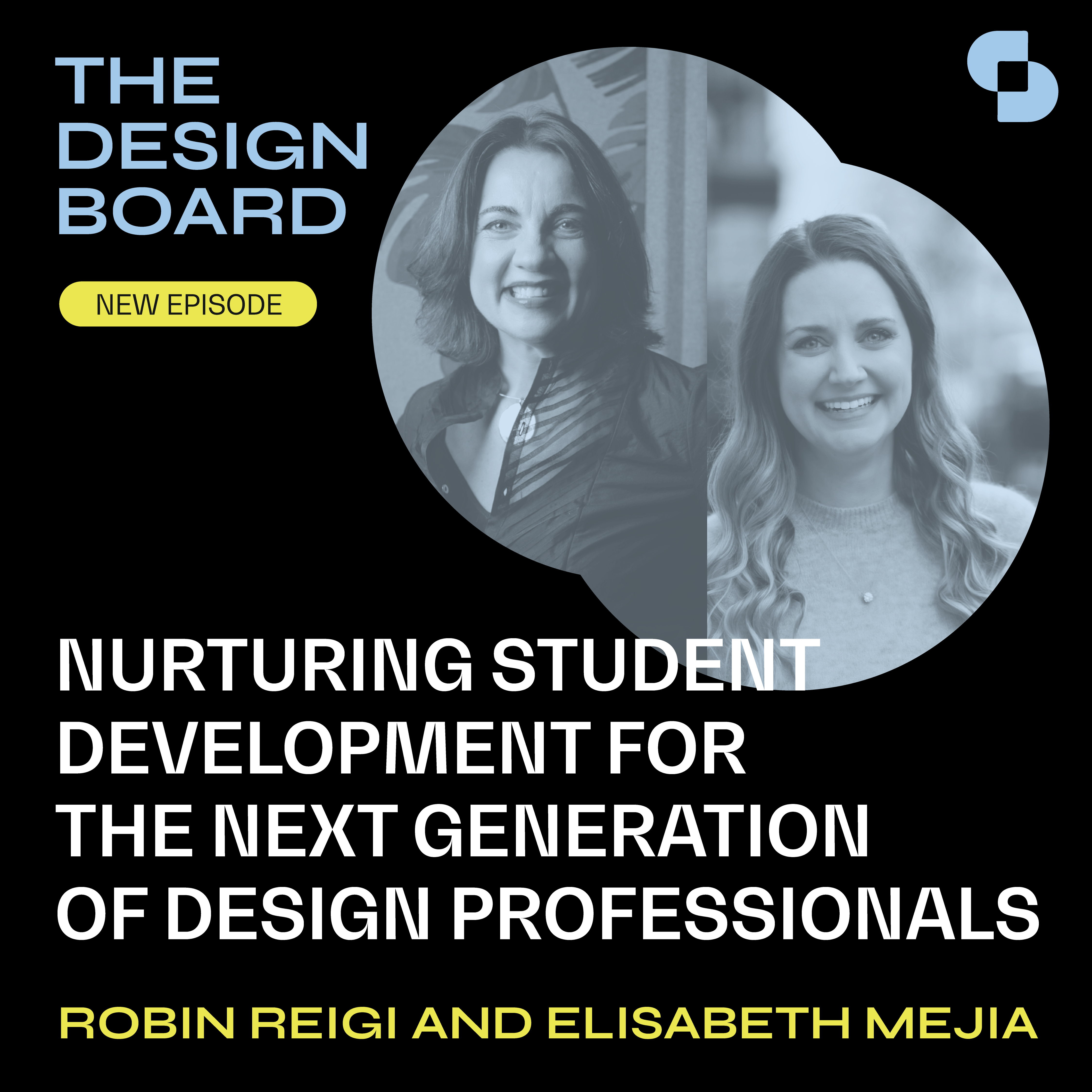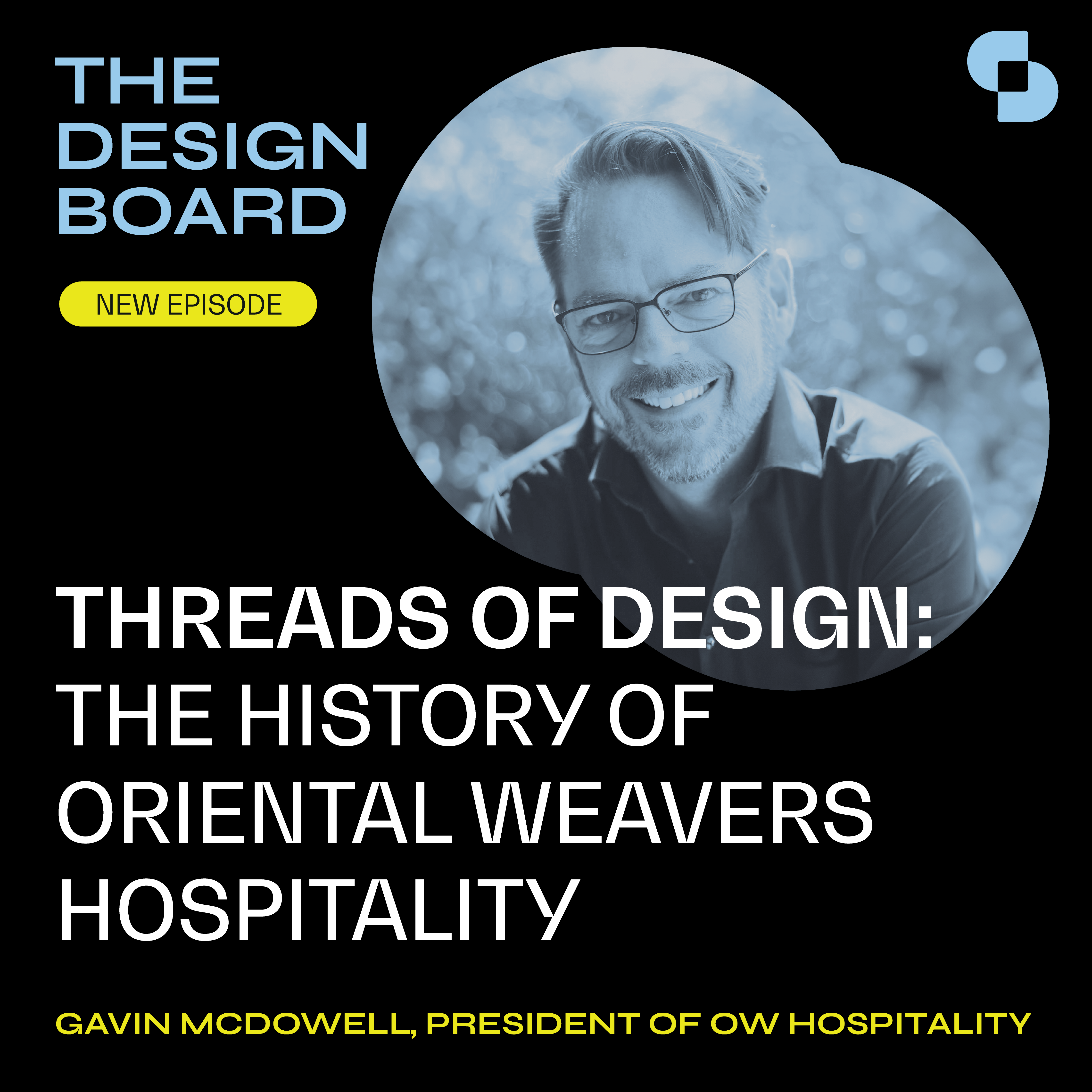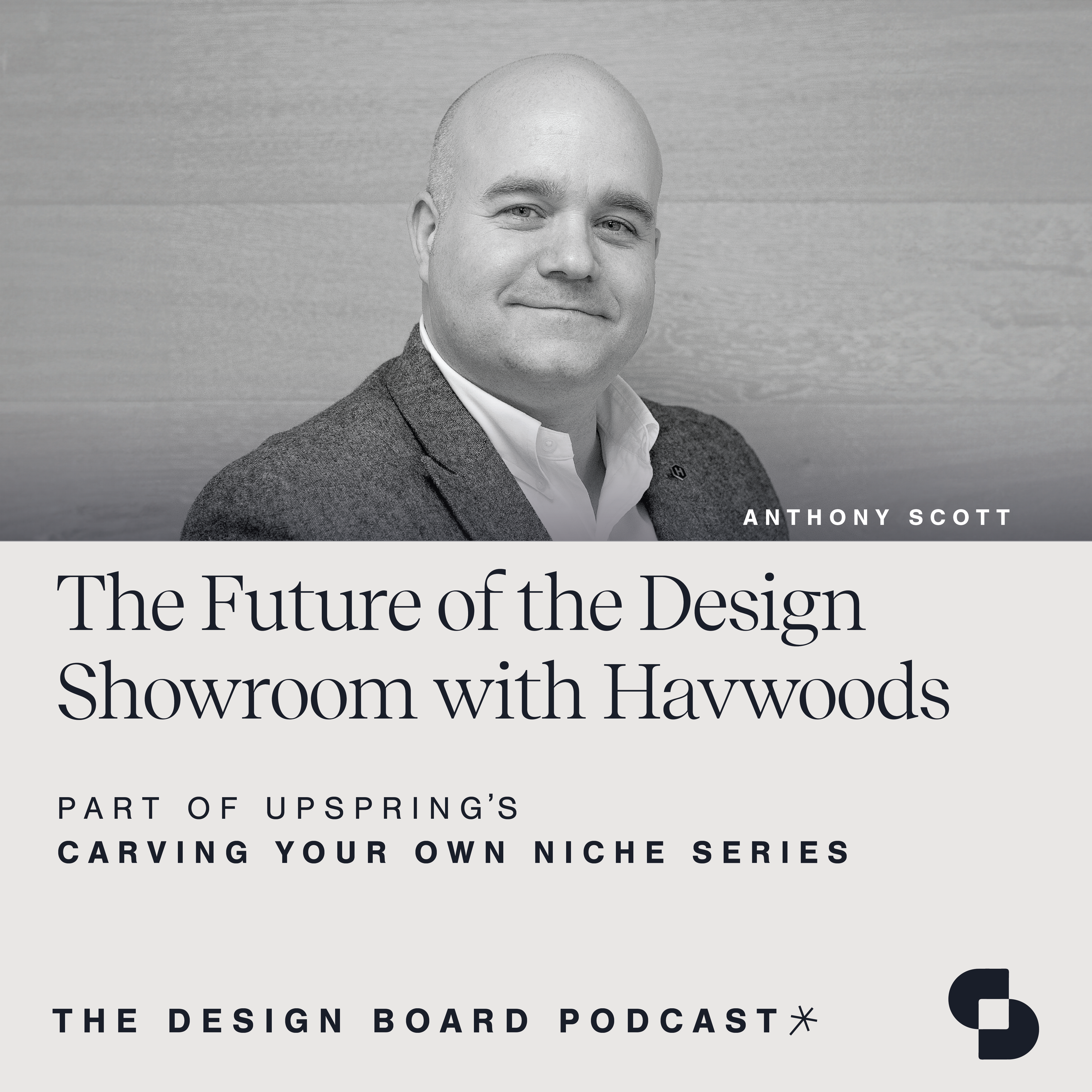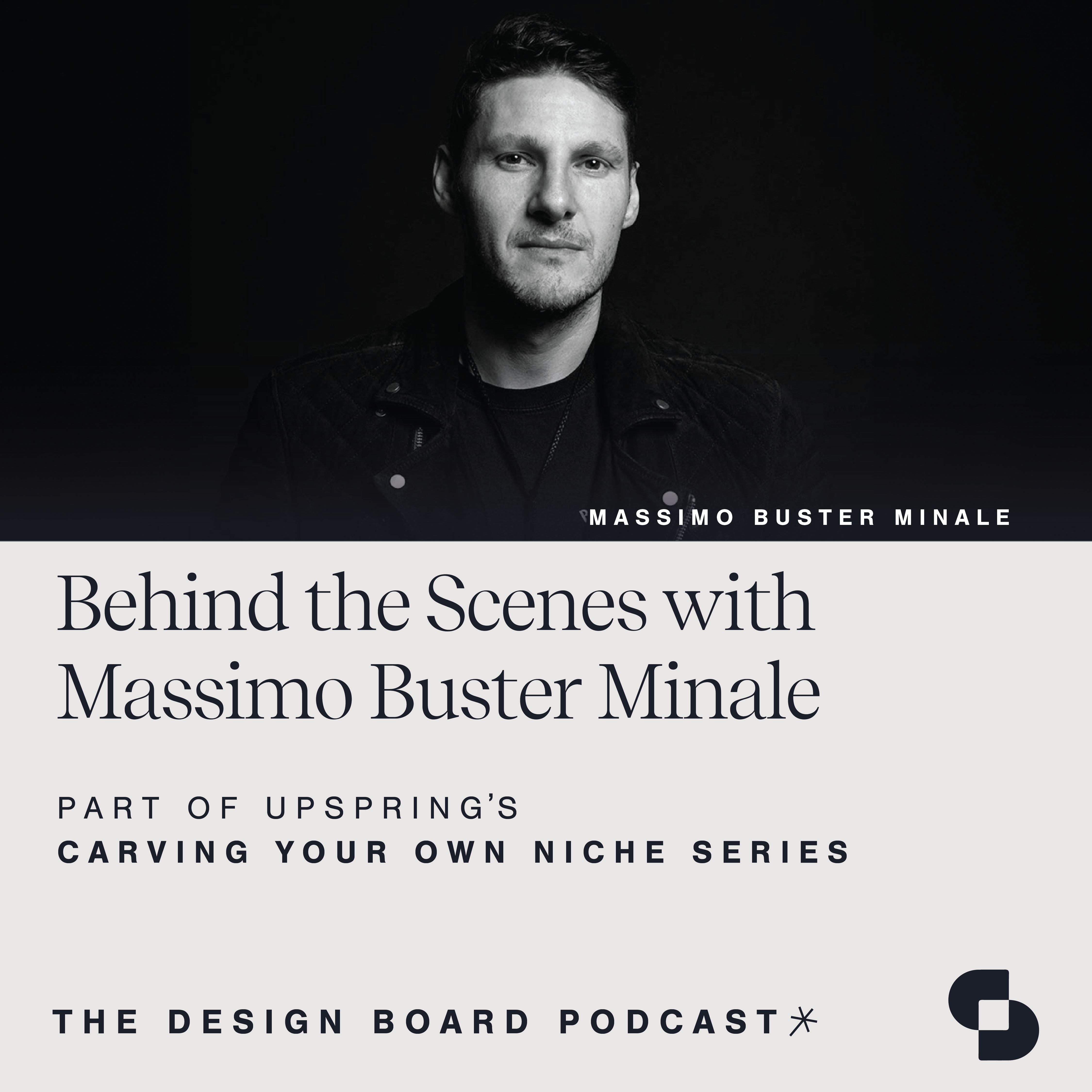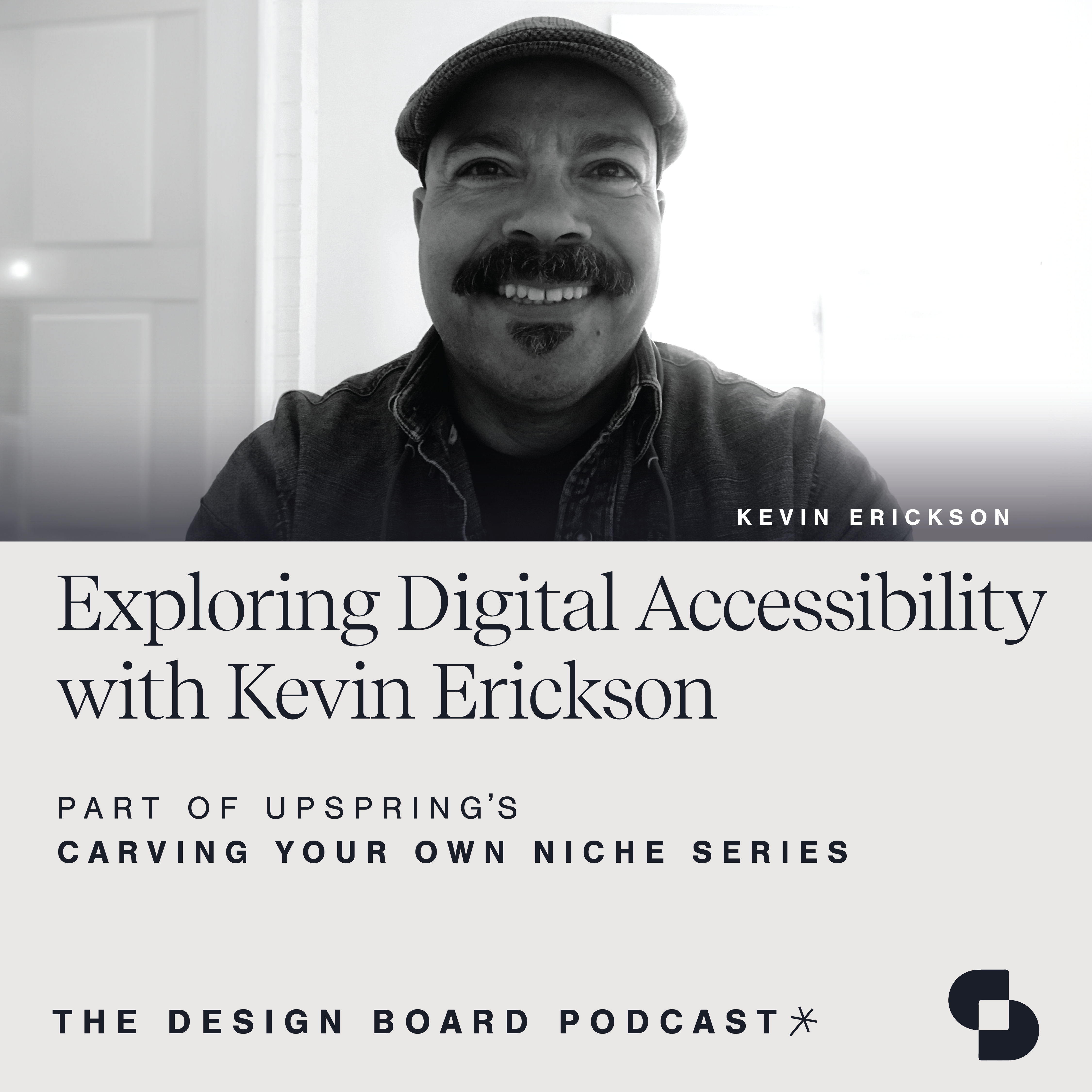Join us in this episode as we dive into the world of rebranding and design with Bethany, a visionary in the interior design industry. Discover the transformative journey behind Bethany's recent rebrand, including the intricacies of website overhauls and the strategic balance between functionality and elegance in design. Learn how Bethany measures the success of her rebranding efforts and explores new avenues for business growth. From collaborating with clients to staying at the forefront of industry trends, Bethany shares invaluable insights and inspiration for aspiring designers.
The Design Board, by UpSpring, is a proud member of SANDOW Design Group's SURROUND Podcast Network, home to the architecture and design industry’s premier shows.
Speaker 1: Welcome to The Design Board, a podcast created by the team at UpSpring that focuses on design, development, and everything in between. We invite innovators in our industry and explore topics that support your growth in every way. The Design Board is a proud member of SURROUND, a podcast network from SANDOW Design Group featuring the architecture and design industry's premier shows. Check it out at surroundpodcast.com. Caroline Saba: Welcome everyone to The Design Board, a podcast by UpSpring that focuses on design, development, and everything in between. I'm your host, Caroline Saba, and today I'm joined by Bethany Adams, an NCIDQ certified interior designer who specializes in spaces where functionality meets elegance, modernity embraces history, and unexpected design moments are around the corner. With the discerning eye for timeless yet unique decor, she ensures that her designs seamlessly integrate with the home's architecture as well as her client's lifestyle. Bethany recently underwent a rebrand, which involved a comprehensive refresh of her website.Working closely with the UpSpring creative and web teams, they collaborated to define the optimal user journey and develop a new messaging strategy. The result is a rejuvenated website and brand identity that accurately reflects Bethany's full range of services and capabilities. Bethany, thank you so much for joining me today. I want to kick things off by chatting first about your rebrand. Can you tell us a little bit more about the journey and how it came about? What really led you to the decision to refresh? Bethany Adams: Sure. Well, it's a little long story, little bit of a long story. I have been steadily working for a good long time, almost 20 years, and for myself for almost 10. And I had a couple of years ago finally gotten my first whole home design and decorating project here in Louisville. And while I was still in the midst of working on that project, I hadn't finished or photographed it yet, I just knew that this was going to be the project that was my big break that was going to put me on the map. And I started thinking for the first time about things like publicity and I hired a publicist and she sort of set me up, again a year in advance of that project even being photographed, set me on a path of professionalism and getting my ducks in a row for that eventual day when that project came to life. And eventually it did get photographed and it did come out and it was published online in AD and right about then is when I thought, "Yikes, I really need to step up my website." And I had gone from having no website two years before that to a WordPress site, which had pictures on it, so that was a big step up from no website. And then I took another step and went from having no branding to having a wonderful local designer do some branding and a real website for me, which was again, a huge step from my WordPress site. But once I did get that big press feature in AD it became obvious to my publicist and I that I should take another step on my journey and really have a more nationally focused rebrand because I was getting this national press and hopefully that's the trajectory I'm going to stick to. That's the plan. And I want my work... This, again, was the first whole home project that I had ever had to show the world, and I wanted my site to really reflect that particular project because it was really the first time I had had clients who trusted me to fully do a space and they had the trust and the budget to do it the way I wanted it. And so it really was just the right time to bring those two things together in a really big way. Caroline Saba: I love that. I love that you're saying it was like the growth and the evolution of your company and your brand too alongside the projects. That's great. So it sounds like it was quite the journey. For this most recent rebrand, what was your favorite part of the process and is there a specific part that you're most proud of? Bethany Adams: Oh, gosh. Well, the whole process was fun. I think you know I put everyone through their paces a lot, and it's really hard. I think as a designer myself and an aesthetically driven person, it's just hard because I like everything, and so I like all the ideas and they were all great. And the really hard part was deciding which one was slightly better than the other. I loved the whole branding part I think the most. The colors, even though that was the hardest part too because again, I loved all the colors and they were all fantastic. But just seeing what you all thought of them and why they worked was the most interesting I think. And I remember I had shown you this artist, Luke Stevenson, who does these bird photographs that I am enamored of, and we used that as some color inspiration. And I love that we were all excited equally by that because I've just been obsessed with him ever since I found his artwork. And I just was excited that we all were on the same page about how great that was and the contrast and the colors. And I was just really picking the ones we all liked the best. Even though they're all great, we just had the choose. Caroline Saba: I know. I think the colors might've been one of my favorite parts too. Just really seeing honestly too your personality and your brand shine through in the way the colors are infused throughout those brand guidelines in the website. Bethany Adams: And honestly, it was surprising to me too the colors we ended up with. I never would've guessed those were my colors, but they were. And they are. Caroline Saba: They're so fun. I love them. Bethany Adams: It's nice to be surprised like that. Sometimes on this go round too, I had to challenge myself to give up a little more control. The first time I had worked with this wonderful lady, I was reticent to give up control, and I'm sure I drove her really crazy. And I was like, "I need to take a back seat here because these people know what they're doing." But it's really hard as a design person and a small business owner and all the things. I'm a real micromanager. But it's interesting to see how other people interpret you, you know? Caroline Saba: Yeah, I think having a different perspective too is also helpful. Showing you things that maybe you haven't necessarily seen or taking things that you say about your brand and then translating that into the colors, the design of the logo, the way the website's laid out. I think my favorite part was seeing it all come together. So after the branding as it got translated to the website and for us to see your personality just truly shine through you as a designer and then also all the projects that you're working on. It's like my own personal Pinterest board, your website. Bethany Adams: Yeah. The website was super fun. And I think part of the challenge for me in the website aspect of it was I have a bunch of projects photographed and ready to go that we can't put up yet, and it's killing me because I know they're going to look so good once they're up there and work with all the colors. And it's going to be a while before we can see them up there. Caroline Saba: I know, but they will look equally as good in a beautiful spread and a lovely publication. So it will be worth the wait. So I know you started to touch on this a little bit, but through these different evolutions of your brand, how important do you feel like each of these refreshes have been into the way that people perceive you even as a designer and then also the way people are perceiving your brand and the services and capabilities you offer. Bethany Adams: So important. So, so, so important. I think this is a weird business where people in the world just have so many bizarre assumptions about it. People come to my office and be like, "Oh, you come to work every day." And I'm like, "Yeah, I do." It's a full-time job and also a business that I run. I'm not just a lady who does this between school pickups. I went to school and I have been doing it for 20 years. So I think I have struggled in the past with coming across as a professional, even though I am very much one, and even though I like a lot of professional ladies in all kinds of different career paths have taken off time to have kids and things like that. And I do sometimes pick them up from school like all women with children. I also have a couple of degrees and a couple board certifications and am killing it. So I sort of needed something. What I also wanted out of this website was something to be like, "And boom. Stop asking me dumb questions. Look at this website and just understand that I am a real business and a real design person and you can contact my assistant for a meeting and stop asking me to do silly jobs [inaudible 00:09:47] because you're not getting it." So I think having a really professional presence and a website that looks like it was expensive and professionally done by a team of people is a big part of that that says, "Guess what? I am also a professional person who costs a lot of money and does a professional job at her job." It's just across the board raising the bar a little bit. Yeah. So that's definitely what I was hoping for and going for, and it's just part of the whole thing. Having a professional photographer take my portfolio pictures is different than just me [inaudible 00:10:32] phone pictures. Just raises the bar and makes people say like, "Oh wow, this is something different." Caroline Saba: Yeah, absolutely. I think that was a fun part of the process for us as well when we were really figuring out the user journey, like you're saying, what information do we actually need to share in order to educate people, not overwhelm them with too much insight, but guide them to the place where they need to go to fill out a form or request more information so that you're really making sure that the leads that are coming through are the types of clients and projects that you are wanting to work on as you grow. Bethany Adams: Exactly. Yes. I was getting a lot of leads that were not the ideal fit as they say, and it was taking a lot of time on the back end to have this back-and-forth dance where I had all of this pre-written stuff that was like, "Here's what we offer." And then it would go back and forth and back and forth with these automated emails, and in the end it was like there was no way they were ever going to be the right fit. And so what we tried to do with the new site was really cut to the chase a little bit more to save everybody a lot of time and heartache to just be like, "Maybe it's we're for you, or maybe we're not, but you can find out right away this way so you don't get too far down the path and feel misled." And I don't have to spend a lot of time on the back end being like, "Oh, this is never going to work out," but I have to write back and be like, "Well, let's see. Here's what we offer." Caroline Saba: Yeah. I think it also helps to build that trust and transparency too, because you put the information out there. There's no secret, this is what I offer. This is how I do it. Yeah. Bethany Adams: Surprise, we cost a million dollars. Yeah. Caroline Saba: Exactly. Bethany Adams: You'll find out after the fifth email, right? Caroline Saba: Exactly, exactly. Okay, great. One other question too. I am probably your biggest fan on social media, but how do you foresee your new brand playing out too, especially on Instagram? Do you think how you'll infuse the different colors? What are you thinking there? Bethany Adams: That is a great question and I haven't been thinking about it. Caroline Saba: No worries. Bethany Adams: But I'm going to start thinking about it soon. I thought about it insofar as I made new little buttons for my highlights for stories, and I was proud of myself because I used my new pattern and my new colors. And so I thought about it in that way. And then I changed my profile picture to one that sort of mirrored the new color scheme a little bit more. So I'm thinking about it just mostly aesthetically at this point. And I made a little story using the new branding colors and fonts and things. So I was thinking about, yes, just trying to create more graphic stories. Yeah, just maybe a little more consistency. And when I have some time to truly think about it, I will. But I think that's probably where I'm headed is just a little bit more visual consistency. Caroline Saba: Yeah. I think that makes sense to tie it back to what you have on the website and then your overall branding. I think too should just build excitement. I remember when you posted a sneak peek of the website coming, just how many comments and how many people were actually really genuinely curious to see what everything looked like. Bethany Adams: Yeah. And I think I'd like to start doing a more consistent press when I post something on Instagram about press. I've gotten little more consistent background, and here's the press. Caroline Saba: Definitely builds that excitement. I want to talk more about your design background, but before I go into that, on the rebrand side, any advice that you would offer to, whether that's a smaller design studio, larger design firm, if they're thinking about a rebrand, places to start, how to overcome maybe that stress of change? Any advice you would offer? Bethany Adams: I would say it's scary to rebrand. I mean, in some ways I feel like my company is young and in some ways it's actually not. It's pretty old. But I'm new still to the idea of branding. So my branding was a year old and my older sister chided me for getting a rebrand because that's what older sisters do. "A year later, what a waste." But I was also like, "But you know what? Nobody knows me yet, so now's the perfect time to rebrand." I'm still kind of anonymous, so before I get known, now's the time to rebrand. So I think that's probably true if you're kind of still lurking in the background, rebrand before you get all that attention. That's probably the time to do it. And then if you're an older brand... You know what? There's great case study, Kelly Wearstler, who is a huge design star, had a very recognizable brand mark that was amazing and based on the whole Wiener Werkstatte studio, amazing and wonderful. And then she rebranded to another amazing and wonderful thing, and it didn't cancel out her first branding, just like it was time for a shift. And I feel like it didn't hurt her at all. It just was time for a change. So I don't think there's ever a wrong time. Sometimes you're just ready for a change. Caroline Saba: I think so too. I think that almost goes back to what you were saying in the very beginning, it's the growth and evolution of your brand and just honoring that as it happens. It comes regardless of the timeline. Bethany Adams: Exactly. And as designers, our styles are always going to be evolving. We're never going to be doing the exact same thing we were 10 or 20 years ago. Maybe there's going to be some through line, but I think we get bored. Caroline Saba: Yeah, totally. Bethany Adams: Even if it's great all the way through, I'm going to want something new in 10 years just because. Caroline Saba: It's true. Well, you'll be an entirely different brand by then too, I would hope. Right? More and more projects. Bethany Adams: Yeah. We're just going to want something new and fresh. We love novelty. Caroline Saba: Agreed. So speaking about projects, one of the things that I loved the most when we were going through the due diligence with you learning more about your brand is that you have this unexpected design element around every corner in the houses that you designed. So my question for you is how do you balance that, creating uniqueness, infusing client personality with overall functionality of the homes in your designs? Bethany Adams: Well, okay. I think there are so many things in any home design. It's like, "One, you have to actually first design a home for people to live in," right? They've got kids, sometimes they've got pets and spaces have to work and they have to meet building codes. And so you start there with all of those things. I always start with building plans. And we first make a floor plan that makes sense for people to live in and for building inspectors to pass. Caroline Saba: Important things. Bethany Adams: So that's always where we start. Yeah, the important stuff, "Here's where your bathrooms are in your hallways, in circulation and stuff like that." And at that point, I'm starting to think about what I want things to look like, and we could do this here and we could do that there, but usually I'm just thinking about that. I'm getting excited in my head about what it could be. And then we sort of start building upwards and thinking elevations, like, "This wall could be all your books that you have from all of your degrees and things." And then I sort of start way out here and get smaller and smaller and smaller and smaller. So it's floor plan and then it's elevations. What do these walls look like? Is this a fireplace? What are we looking at here? And then it's furniture and soft goods. And then micro, micro level, then it's arch and it's lighting and the little tiny things that make everything look so pretty. So I think functionality is number one. It's a home to live in. And then the unexpected usually comes more towards the end because that's the decor. And I like to do things that are a little fun and surprising. And these wonderful clients who trusted me with their whole home were just delightful, wonderful people who have since become very close friends and are aligned in that where they also love to do wacky things that are surprising and unexpected and fun, and they love design and art. So I'd throw something out and they'd say, "Yes," or "What if we even did this?" And I'd say, "Wow, yes." They were just willing to go for it. So it was great. It was a match made in heaven. But yeah, I think especially because I like to work in older homes and historic homes, and there's a tendency, especially in Louisville, to lean into traditional decor. And I love an antique as much as the next gal. And I love historic homes. I love preserving historic elements of homes. I'm not into tearing that out. I'm into preserving every single historic [inaudible 00:20:06]. But I think you've got to throw in a little fresh now, contemporary aspects or else you feel like you're in a museum or a grandmother's house. It has to feel fun and fresh and colorful or it's a little spooky. Caroline Saba: We don't want spooky. Bethany Adams: We don't want [inaudible 00:20:28]. We want it to feel like, "Wow, I did not expect that when I walked through this door," what from the outside looks like a very old house. Want it to feel fun for a young family. Caroline Saba: You started to touch on a lot of other things I'm curious about. Just going back to the colors. When it comes to deciding which colors you're implementing into the design or how you're complementing with the various textures and materials, what do those conversations look like for you and your clients? Or are you really coming forward with those different ideas? And if so, how are you choosing the color palette and the material palette for these various homes? Bethany Adams: It's a good question. It's really kind of organic. I often don't know where the colors are coming from. In that house, I was just really drawn to all this mustard yellow and all of these bright, bold colors. And then I realized a couple months later like, "Oh, these are all the colors that are in these shield stained-glass that are in every single room. So I'm sure I'm not magic. I realized that subconsciously, and that's why I was pulling all these colors and knew that they would look great together, but I wasn't thinking, "Oh, this will match that window perfectly and this will match that window and it will all come together." But it did. And then they were drawn to them too I think for the same reasons. It just fit. It just worked. And then in this other room, they have all of these amazing books, and those books weren't there until after all the furniture was in, and then they just put their books away. I wasn't there. They just put them on the shelves and it made the space because it's every single color that is in the space. And it just made tons of sense. And we all were like, "Well, we're geniuses." Who knows? Caroline Saba: You are. Bethany Adams: It just made sense. I don't know. Sometimes it just all... You do it for a reason, but you don't know what that reason is until the end. Caroline Saba: Yeah, I love that. Bethany Adams: It comes together. Caroline Saba: Yeah. That's great. So what about the collaboration with the clients? I know you mentioned that one project where they were really on board with all the ideas and the wacky surprises around the corner. How involved do different clients get and does that really impact the overall design of a space if they're less involved or more involved? Bethany Adams: I will say all of my clients are very involved in their spaces because it's where they live, and usually both partners have a lot to say about it. So they're all very involved. And I will say those two were just especially let's go for it. But most of my clients do to a lesser degree want to push the envelope a little bit. So all historic homes, they're all different eras and all different... I'm working on this other house that is equally stunning, but a totally different era and style, and it's actually even more colorful but in a totally different way. And you're going to flip when you see it. Caroline Saba: Yay, that's awesome to hear. Bethany Adams: Right. It's so cool. But it's completely different. But I think everybody wants to have their opinion heard and they want to be comfortable in their space, and I'm hopeful that now that my projects are starting to reflect my capabilities a bit more, that people who like that kind of thing will start to search me out. Caroline Saba: Yeah, I agree. I love that. What about trends in home design or new technologies, importance of sustainability? Two questions in one. How are you staying up to date on your end of what's trending in residential design, and then two, how does that factor into the design decisions that you're making? Bethany Adams: I don't think I am terribly good at staying up to trend, although I'm always on Instagram and Pinterest just seeing what's out there. Caroline Saba: That counts. Yeah. Bethany Adams: Yeah. Especially, and I go to markets and stuff like that, but I try not to be trendy because things are in and then they're out. But especially because we're in the middle of the country here. We're a little cut off from things. So I do actually look mostly to European design magazines. What's around the corner or what products maybe haven't launched here yet, but will in a couple of years because if it's in a magazine here, I've probably already used it two years ago. You know what I mean? If's in a magazine here in the states, then designers are already using it. We've already heard about it. So the question is, I'm not trying to be trendy, but I do want to know if there's something new and interesting happening. I'm really into the idea of using lava stone as a countertop, and that's just starting to be a thing here, and it's actually really hard to get your hands on. But 10 years ago I was trying to do a kitchen with zellige tile and it was a whole thing because couldn't get it anywhere. And now it's like zellige [inaudible 00:25:50]. Caroline Saba: Of course. Bethany Adams: Exactly. And the same thing with a plaster Tadelakt finish in a bathroom. But he was like, "I don't even know what you're talking about in Kentucky." And I didn't know what it was called either. I was just like, "Here's a picture," and we couldn't do it. So I'm not always successful with... I'll be like, "Here's a thing I've seen," and then nobody can do it. But I do feel like I want to know what's going on in the world of design at large, and the way to do that for me is to look beyond just what's happening in New York or LA because I'm pretty clued into that at this point. Caroline Saba: I think that makes total sense. I think that's great advice too, because like you said, things can be so saturated in the US, especially in those hot spots. So it's good to kind of think outside the box and get a little bit creative too with what's trending elsewhere. Bethany Adams: It is. And again, as someone who designs almost exclusively in historic properties, maybe I'll bring in some trendiness in decoration and furniture or something, but I'm probably going to steer clear of trends in anything that's attached to your home because that's sort of more permanent. And what we're looking for is something that's going to enhance the existing architecture. Maybe it's not going to be... I'm not into reproduction things usually, but we don't want it to look like a moment in time. This kitchen was remodeled in 1988, which is usually what I say when I walk into somebody's house. We're coming in and we're like, "Okay, this was last touched in 1988 and now it's time for a refresh." I don't want somebody to say that in 25 years when they come back. Caroline Saba: Yeah, definitely. It's like design elements that are functional, stylish, meet that client's vision, but then also can withstand the next 10, 20, 30 years. Bethany Adams: Maybe you want to update the countertops or something later on. Again, people get bored. Maybe you just want to freshen it up, but I don't want anyone to come into a kitchen I've designed 20, 25 years from now and be like, "This looks like this got to go." So 2023. Caroline Saba: It's true. It's true. I totally get it. My parents are renovating their kitchen right now. They had renovated it maybe five years or so ago. But simply stylistic. They're like, "We hate the countertops now. Why did we choose cherry cabinets?" It happens. People's styles change. Bethany Adams: Yep. Five years. That didn't last. Caroline Saba: No, it did not. Bethany Adams: Oh, man. Caroline Saba: Oh, too funny. My last question for you is really advice for aspiring interior designers or anyone looking to either go to college to study design, or just graduated and are trying to spread their wings a little bit. What would you say to them on best tips for cultivating their own signature style? Bethany Adams: Ooh, signature style. Well, that's a lot of questions in one. Being an interior designer is so many different things to so many different people. It's one of the weirdest professions because it is regulated in some states and not in others. And so in some states it just means you're, let's say, "I'm an interior designer because I am." And then in some states you have to have gone to college and passed a licensing exam and jumped through all these hoops and take years out of your life like an architect or a doctor to do it. So gosh, first of all, if you went to interior design school and then you're going to go that path, you're going to work for somebody else probably and go that route and see what that's like. And you're going to figure out your style that way I think just by process of elimination and by being exposed to all the different great designers and work out there, and you're going to totally borrow from everybody because that's what everybody does. Until you make up an amalgamation of your own style, it's all experimentation and it's all trial and error. And I am suspicious of anybody who is like, "I have one style and I've stuck with it from day one and never wavering." It's like, "Is that a style," or I don't know. It's a little prescribed. And then the other route is you are a person who is an artist. Artists don't need to have gone to school to be artists, right? It's raw talent. And so you are going to be just experimenting with what you like and trying things out. And I think that one is a little more open, and that route is a lot more of a decorator than a designer, and that's a wonderful career too. But you're going to be experimenting more with colors and fabrics and textures and making a space beautiful rather than defining a space with walls and think that. So that's my answer. Caroline Saba: That's great. That's good advice for both paths I think. Obviously, it takes time to really figure out. Bethany Adams: Time and you've always got to be changing and evolving. Caroline Saba: Yeah. Bethany Adams: Whatever I'm into now is not what I'm going to be into in five years. Caroline Saba: Oh, totally. Bethany Adams: Yeah, moved here five years ago and redoing rooms. Caroline Saba: Oh, wow. That's exciting. Bethany Adams: I can't sit still, can you? Caroline Saba: No, I can't. Luckily, I haven't bought new furniture in, I would say, in seven years, so I give myself a good pat on the back for that. Bethany Adams: That's really good. But the furniture I could afford five years ago is... Caroline Saba: True. Bethany Adams: It's what I can afford now. And also, five years ago I had a little baby and I didn't want her to puke on my nice [inaudible 00:31:40]. So things change in life. Caroline Saba: Life happened. Bethany Adams: [inaudible 00:31:44]. Caroline Saba: Yeah, absolutely. Absolutely. Bethany Adams: I'm like, "She probably ain't going to puke on the [inaudible 00:31:48]. Caroline Saba: Oh, things I can look forward to. Bethany Adams: Exactly. Caroline Saba: Amazing. Well, thank you so much for chatting with me. I've loved this conversation. Bethany Adams: What fun. Caroline Saba: It's been so fun. Bethany Adams: My pleasure. Thanks for having me. Caroline Saba: Of course. Speaker 1: Thank you so much for listening in with us today. We hope you leave inspired by the ideas in today's episode. For more, follow UpSpring on LinkedIn and Instagram. And don't forget to check out the amazing lineup of shows brought to you by the SURROUND Podcast Network at surroundpodcast.com.

